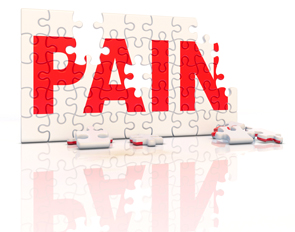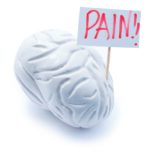
Dmitry3D/shutterstock.com
Who, except the gods, can live time through forever without any pain? —Aeschylus
Pain, swelling, stiffness. These are among the most common words overheard in conversations with our patients. How stiff are you in the morning? Have your joints swelled? Can you rate your level of pain using a 10-point scale?
Discussing aching joints, sore muscles and tender limbs is all in our day’s work. We are rheumatologists; we deal in misery. But trying to parse the true meaning of these terms is among the most vexing of clinical challenges.
True, most swollen joints can be readily observed or palpated, and others might be identified using diagnostic imaging studies. And although it’s a subjective term, the true relevance of stiffness often becomes apparent following a careful review of the results of some simple lab markers of inflammation.
Sometimes, pain plays by the rules and arrives with a retinue of helpful clues; an abdominal pain accompanied by a fever and an elevated white blood cell count demands swift surgical attention to rule out visceral rupture; a pleuritic chest pain with breathlessness often triggers immediate consideration of a pulmonary embolism; a bout of podagra awakening a slumbering patient hearkens the clinician back to Thomas Sydenham’s classic description of gout.
Sometimes, pain can be misleading. Consider the patient with shoulder pain who, in reality, is sickened by their impacted gallstone or the young child whose knee pain and refusal to walk actually signifies an injured hip.
When pain is coy, it presents bereft of any clues. We are all too familiar with these scenarios: the previously healthy, athletic patient with debilitating, widespread pain whose hope for a reprieve from their anguish clings to the spurious finding of a positive antinuclear antibody test ordered by a well-intentioned, although misinformed, clinician; or the person with intractable low back pain following some trivial trauma whose Internet search for help led them astray and into the realm of rheumatic disease. In these situations, you become the bearer of mixed news, having to elucidate how their pain is not due to a defined rheumatologic illness, while also explaining how little we actually understand about chronic pain.
Pain can also be a well-entrenched symptom in many rheumatologic diseases. Consider how some of our patients with an inflammatory arthritis, such as rheumatoid arthritis (RA), start developing vexing pain symptoms. In a typical scenario, their RA is controlled with scant evidence for active synovitis. But then one day, they start to notice pain. Considerable pain. Sometimes the misery is felt in the soft tissues; other times it attacks previously unaffected joints. You examine your patient carefully, seeking any glimpse of the trusted trio of inflammation—swelling, redness and warmth. But there are no sightings. Despite cautious trials of analgesics, corticosteroids and, perhaps, even further immune modulation therapy, there is scant improvement. What is going on? What is driving this new pain?
